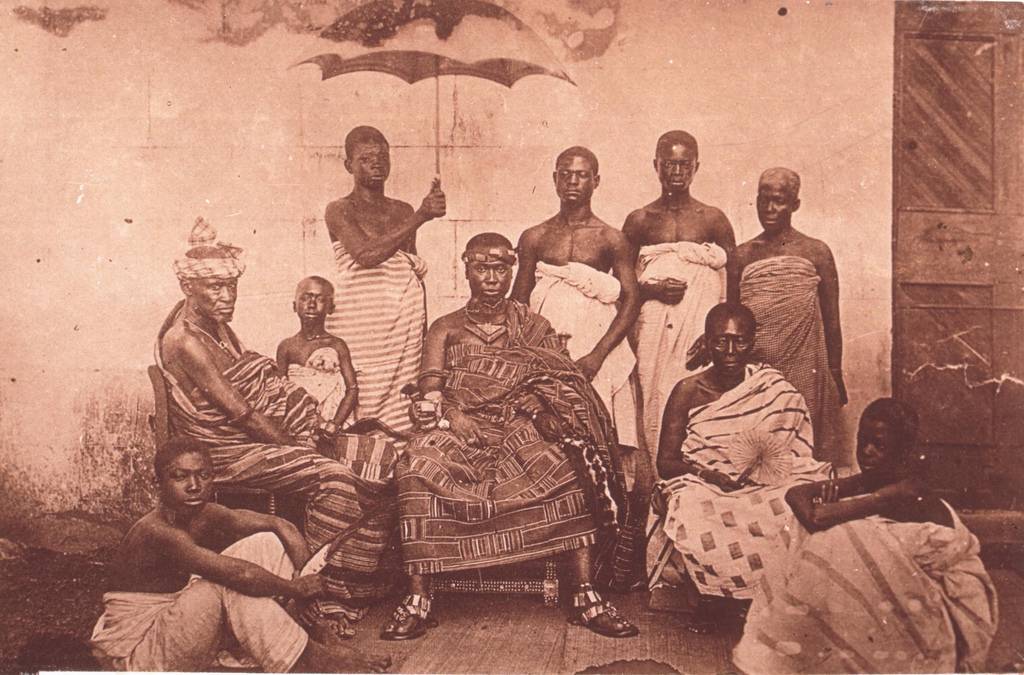History of Otumfuo Nana Prempeh II of the Asante Kingdom
Otumfuo Nana Prempeh II, born Kwame Kyeretwie, reigned as the Asantehene (king) of the Ashanti Kingdom from 1931 to 1970. His reign was marked by a period of significant transformation and modernization in the Ashanti Kingdom, alongside efforts to preserve the cultural heritage and political authority of the Asante monarchy within a rapidly changing colonial and post-colonial Ghana.
Early Life and Background
Nana Prempeh II was born in 1892 into the Oyoko Royal Clan of the Ashanti people, a lineage that had historically produced Asante monarchs. As the grandson of the famous Asantehene Prempeh I, who was exiled by the British in 1896 following the Yaa Asantewaa War, he grew up in a politically charged environment. His early life was shaped by the decline in the Asante Kingdom’s power after its annexation by the British as a colony in 1901.
Kwame Kyeretwie was educated in the Western tradition, attending schools in Ghana (then the Gold Coast), where he developed a keen understanding of both European and Asante governance. This dual exposure would later serve him well as he sought to restore the dignity of the Asantehene during his reign.
Accession to the Throne
In 1931, he was enstooled as the 14th Asantehene under the stool name Otumfuo Nana Prempeh II. His accession marked the revival of the Asante Confederacy, which had been dissolved during British colonial rule. His selection was seen as a unifying choice, symbolizing the restoration of the Asante traditional system.
Prempeh II worked closely with colonial administrators to reestablish the Asante Confederacy Council, a traditional governance system that allowed the Asante people some degree of autonomy within the British colony. The Asante Confederacy Council provided a platform for addressing issues related to Asante identity, governance, and culture.
Reign and Achievements
Prempeh II’s reign spanned several decades, during which he became a central figure in the sociopolitical landscape of Ghana. His leadership was characterized by efforts to modernize the kingdom while retaining the core cultural values of the Asante people.
1. Restoration of Asante Cultural Identity
Prempeh II was deeply committed to preserving Asante culture and traditions. He revitalized key festivals such as the Akwasidae and Odwira, which celebrated the Asante heritage and reinforced the role of the Asantehene as the spiritual and political leader of the kingdom.
He also emphasized the importance of education and encouraged the younger generation to embrace their heritage while acquiring modern skills. His patronage of the arts and crafts industry helped preserve traditional Asante craftsmanship, including kente weaving, goldsmithing, and adinkra symbol production.
2. Political Leadership in Ghana
As Ghana moved toward independence, Prempeh II played a critical role in shaping the country’s political discourse. Although the Asantehene’s powers were limited under colonial rule, he used his influence to advocate for the rights and interests of the Asante people.
He navigated complex relationships with Ghana’s first president, Dr. Kwame Nkrumah, and other national leaders to ensure that the Asante Kingdom retained its unique identity within the newly independent Ghana. Despite occasional tensions between the central government and traditional authorities, Prempeh II maintained his stature as a respected figure of unity.
3. Modernization Efforts
Prempeh II recognized the need for infrastructure and economic development in the Ashanti Region. He supported initiatives to improve education, healthcare, and trade. His reign saw the establishment of several schools, including Prempeh College, one of Ghana’s premier secondary institutions.
Additionally, he championed agricultural and industrial projects, ensuring that the Asante Kingdom played a vital role in Ghana’s economic growth.
Challenges and Legacy
Prempeh II faced challenges during his reign, including balancing traditional authority with the demands of modern statehood. The rise of political parties and the centralization of power under Ghana’s post-independence government often put traditional leaders in a difficult position.
Despite these challenges, Prempeh II’s reign is widely regarded as a period of cultural renaissance and stability for the Ashanti Kingdom. His ability to blend tradition with modernization ensured the survival of the Asante monarchy in a rapidly changing world.
When Nana Prempeh II passed away in 1970, he left behind a legacy of resilience, cultural preservation, and progress. His successor, Otumfuo Opoku Ware II, continued many of his initiatives, further solidifying the importance of the Asantehene in Ghanaian society.
Conclusion
Otumfuo Nana Prempeh II’s reign as Asantehene was a pivotal chapter in the history of the Ashanti Kingdom. Through his visionary leadership, he ensured the survival and relevance of Asante traditions while embracing the opportunities of the modern era. Today, he is remembered as one of the most influential leaders in the history of the Ashanti Kingdom and a key figure in the cultural and political development of Ghana.


